The misunderstood mystique of moths
Butterflies like the stately monarch and elegant swallowtail are celebrated for their ornate beauty and role as crucial pollinators, but what about moths? If you’ve been dismissing them as sweater-munching pests, prepare to be pleasantly surprised.
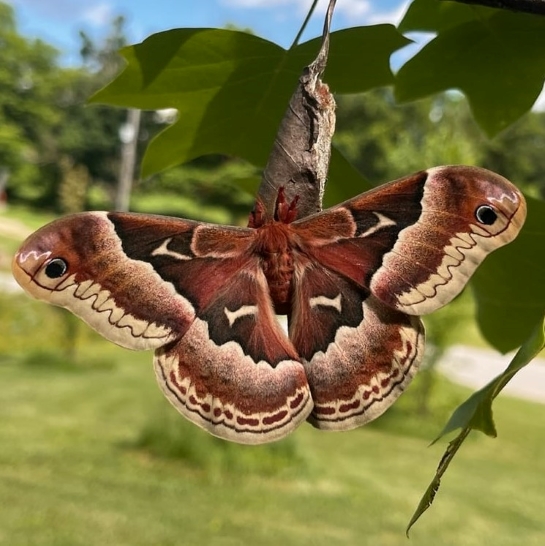
The vast majority of moth species don’t wreak havoc on your wardrobe or the ecosystem but are, in fact, quite beneficial. And though the words “butterfly” and “moth” tend to evoke different feelings in people, the two have much in common. They share a penchant for pollinating flowering plants as well as a four-stage life cycle: egg, larva/caterpillar, pupa and adult. As adults, both have four wings, small scales and a coiled proboscis: a straw-like structure used to drink the kind of liquids you’d expect, like flower nectar, but also stranger ones, like the salty tears (!) of other animals.
It’s possible to distinguish moths from butterflies based on certain features, although there are exceptions to the rules. In general, moths are more likely to:
- be active at night, dawn or dusk instead of daytime
- have antennae that look feathery or comb-like instead of straight or club-shaped
- weave a layer of silk around themselves to create a cocoon during the pupa stage instead of forming a smooth, hard chrysalis
- hold their wings in an open position or at their sides when resting instead of upright
- have an improbable name like “the slowpoke,” “exhausted brocade,” “abrupt brother” or “the laugher” (yes, all actual names used to identify moths found in Canada).
Worldwide, moth species significantly outnumber butterflies. In Canada, there are about 5,000 moth species and 300 butterfly species.
Roles in the ecosystem
More than just a fuzzy face, moths are valuable prey for other wildlife. Moth caterpillars are a key component of bird diets, fed in mass quantities to chicks by their parents as a key source of protein. Bats, rodents, skunks, bears, spiders and many others also eat moths in various life stages.
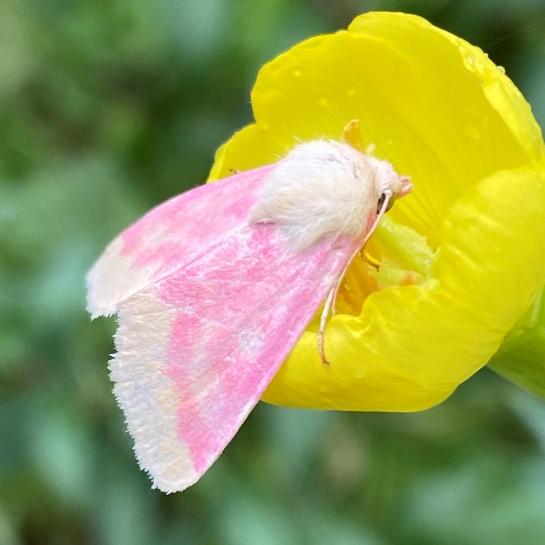
And, as mentioned above, moths are important pollinators. While some moths are active during the day, many pollinate flowers that open after other pollinators have turned in for the night. Some moths pollinate assorted flowers while others focus on specific plant species.
How to see moths
If you haven’t looked closely at moths before, you may be delighted by just how colourful, intricate or unusual they can be. To attract adult moths, simply hang a white sheet outside with a light (a black light or incandescent bulb will work) shining on it for a few hours after dark. Then, take pictures and observe them before turning off the light so they can resume their normal activities. You can submit your photos to iNaturalist to learn more about the species you encountered. Here are a few that you could meet:
Primrose moth
With its candy colours, it’s easy to see why in 2022 the primrose moth (Schinia florida) was voted Canada’s most beautiful moth (which is, apparently, a thing that people vote on). Named for their connection to the common evening-primrose (Oenothera biennis), primrose moth caterpillars eat only this plant and the adult moths rest on it during the day. A 2012 study suggests that, over generations, evening-primroses exposed to insects including these caterpillars defend themselves by shifting their flowering time later, thus avoiding insect predators, and by increasing the amount of toxic chemicals in their seeds, making them taste worse. In Canada, you can find primrose moths from Alberta east through the Maritimes.
Polyphemus moth
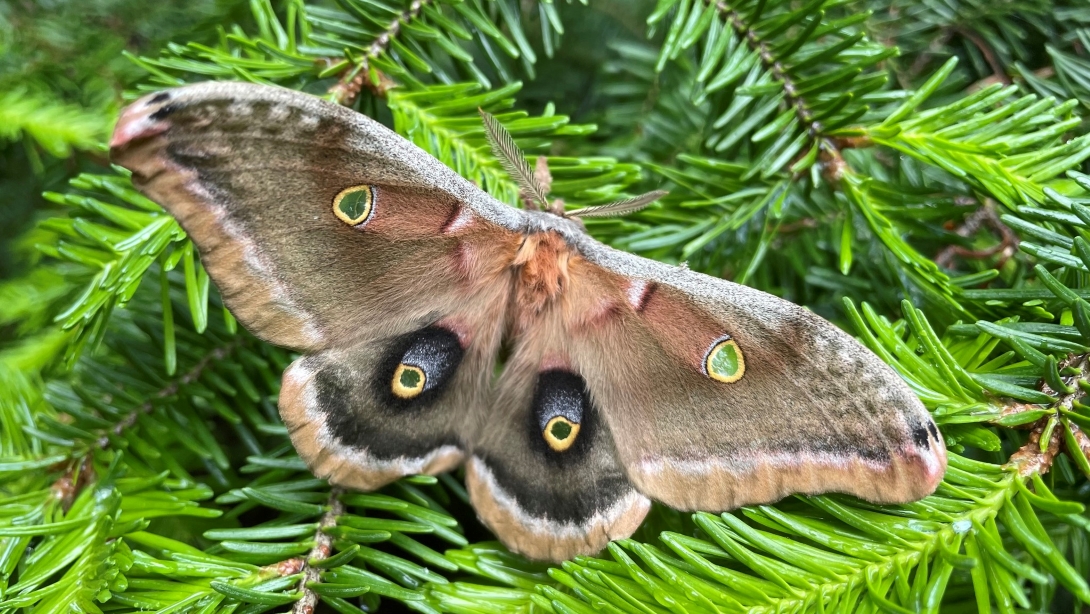
This bold and beautiful moth (Antheraea polyphemus) boasts an average wingspan of 15 centimetres, about the length of a pen. Polyphemus moth caterpillars voraciously eat leaves from trees such as oaks, willows, maples and birches and can grow to human thumb-size, over seven centimetres long, in under two months. The adults don’t eat anything at all, focusing instead on reproduction, and live only a few days at that stage. They’re known for the large, striking eye spots on their wings. This species has been reported in every province in Canada and as far north as Fort Providence, Northwest Territories.
Isabella tiger moth
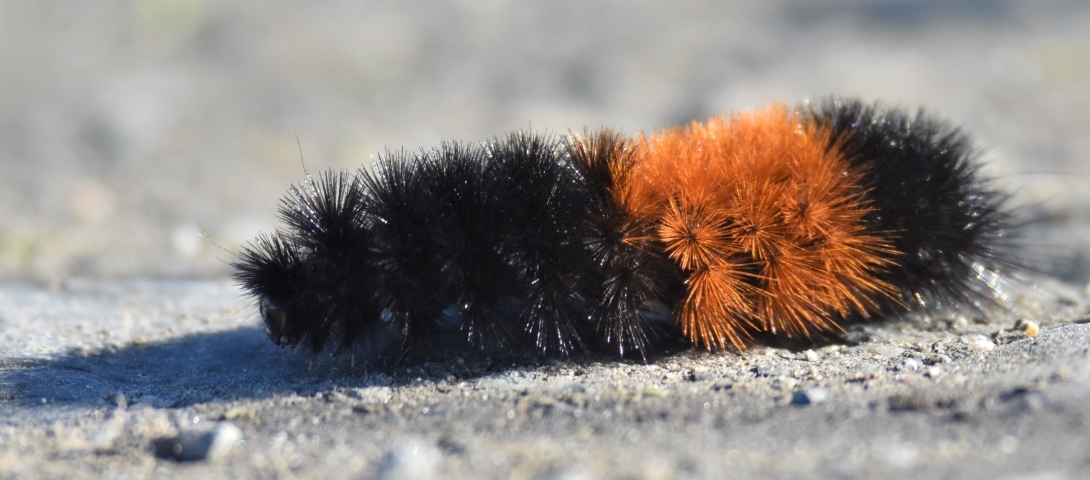
This species (Pyrrharctia isabella) is most recognizable in the larval stage, when it’s known as the banded woolly-bear. This adorable orange and black caterpillar is a familiar sight across southern Canada in the fall, often spotted scooting across pathways on sunny days.
The banded woolly-bear eats a variety of plants and trees including asters, goldenrods, birches and maples. In winter, these caterpillars shelter from the cold by tucking into leaf litter or tree bark. The nectar-sipping adult moths are yellow-orange with brown and black markings and a wingspan of about five centimetres.
Want to see more of the moth species found in Canada? Watch our video “moth-tage!”
How you can help moths
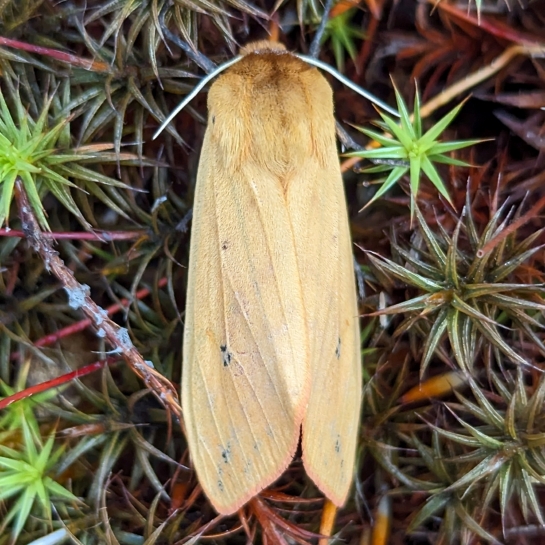
Want to support these pillars of the ecological community? Make a moth garden — it’s like a butterfly garden, but more goth!
Here are some ideas:
- Grow a variety of native plants and trees to provide food for different species and life stages. Caterpillars eat plants parts like leaves, seeds, roots, stems and branches while adult moths tend to drink sugary liquids like flower nectar.
- Include a combination of flowers that open at night and during the day, and that bloom in different seasons, to provide nectar for as many moths as possible.
- Leave out some leaf litter, logs and branches over winter to give moths places where they can shelter from the cold.
- Avoid insecticides.
- Turn off unnecessary outdoor lights or use motion-activated or red-coloured lights, to avoid distracting moths from finding food and mates.


